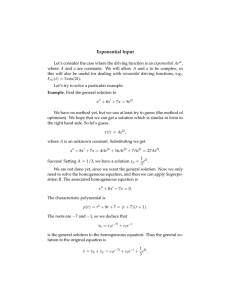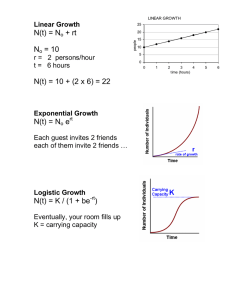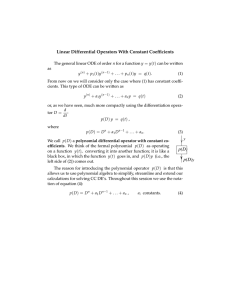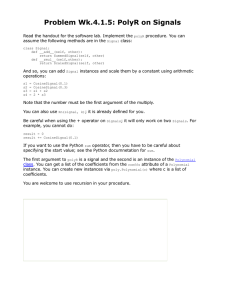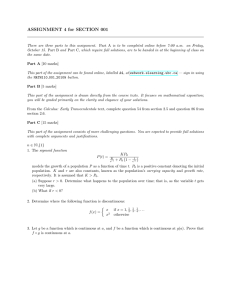Document 13561787
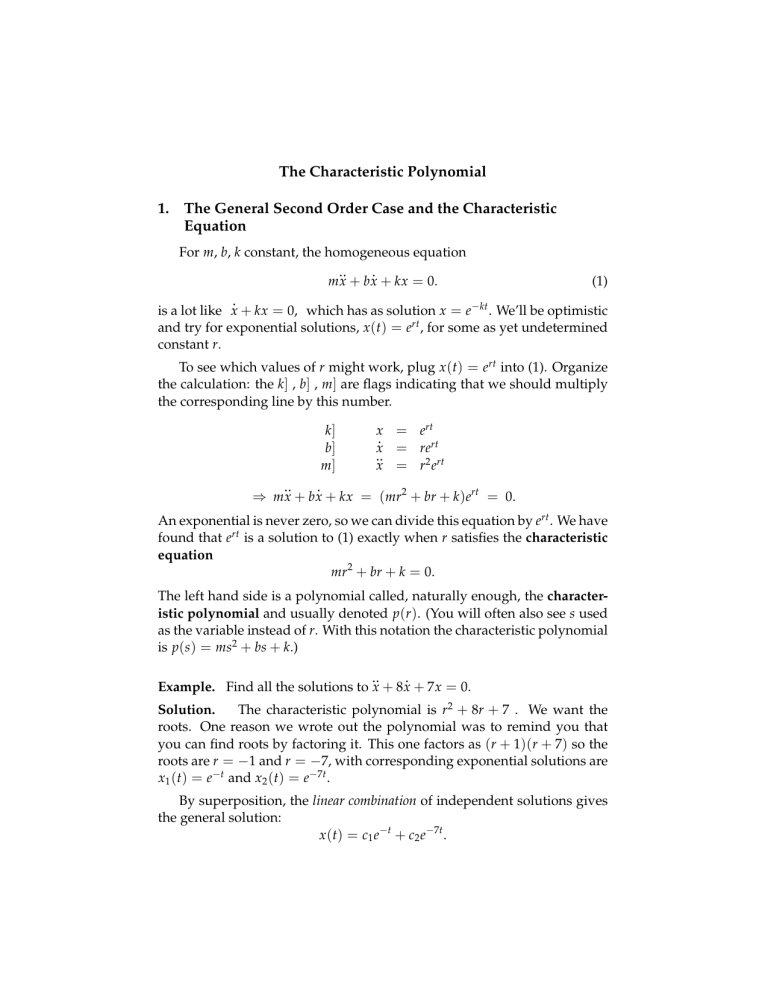
The Characteristic Polynomial
1.
The General Second Order Case and the Characteristic
Equation
For m , b , k constant, the homogeneous equation
.. . mx + bx + kx = 0. (1)
. is a lot like x + kx = 0, which has as solution x = e
− kt
. We’ll be optimistic and try for exponential solutions, x ( t ) = e rt
, for some as yet undetermined constant r .
To see which values of r might work, plug x ( t ) = e rt into (1). Organize the calculation: the k ] , b ] , m ] are flags indicating that we should multiply the corresponding line by this number. k ] b ] m ]
.
x = e x = re rt rt
.. x = r e rt
⇒
.. mx + bx
.
+ kx = ( mr
2
+ br k e rt
= 0.
An exponential is never zero, so we can divide this equation by e rt
. We have found that e rt is a solution to (1) exactly when r satisfies the characteristic equation mr
2
+ br + k = 0.
The left hand side is a polynomial called, naturally enough, the character istic polynomial and usually denoted p ( r ) . (You will often also see s used as the variable instead of r . With this notation the characteristic polynomial is p ( s ) = ms
2
+ bs + k .)
.. .
Example.
Find all the solutions to x + 8 x + 7 x = 0.
Solution.
The characteristic polynomial is r
2
+ 8 r + 7 . We want the roots. One reason we wrote out the polynomial was to remind you that you can find roots by factoring it. This one factors as ( r + 1 )( r + 7 ) so the roots are r x
1
( t ) = e
− t
= − 1 and r = − 7, with corresponding exponential solutions are and x
2
( t ) = e
− 7 t
.
By superposition, the linear combination of independent solutions gives the general solution: x ( t ) = c
1 e
− t
+ c
2 e
− 7 t
.
The Characteristic Polynomial OCW 18.03SC
Suppose that we have initial conditions x
.
( 0 ) = 2 and x ( 0 ) = − 8 then we can solve for c
1 and c
2
. Use
.
( ) = − c e
− t − 7 c e
− 7 t and substitute t = 0 to get
. x
( 0 ) = c
1
( 0 ) = − c
1
+ c
2
− 7 c
2
=
= −
2
8
Adding these two equations yields − 6 c
2
= − 6, so c
2
= 1 and c
1
= 1. The x
. x
( 0 ) = − 8 is x ( t ) = e
− t
+ e
− 7 t
.
( 0 ) = 2,
2.
The General
n
th Order Case
In the same way we can take the homogeneous constant coefficient lin ear equation of degree n a n x
( n )
+ · · · + a
1
. x + a
0 x = 0 and get its characteristic polynomial, p ( r ) = a n r n
+ · · · + a
1 r + a
0
The exponential x ( t ) = e rt is a solution of the homogeneous DE if and only if r is a root of p ( r ) , i.e. p ( r ) = 0. By superposition, any linear combination of these exponentials is also a solution.
2
MIT OpenCourseWare http://ocw.mit.edu
18.03SC Differential Equations
Fall 2011
For information about citing these materials or our Terms of Use, visit: http://ocw.mit.edu/terms .

